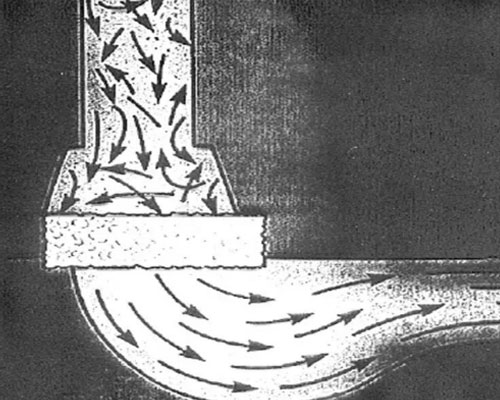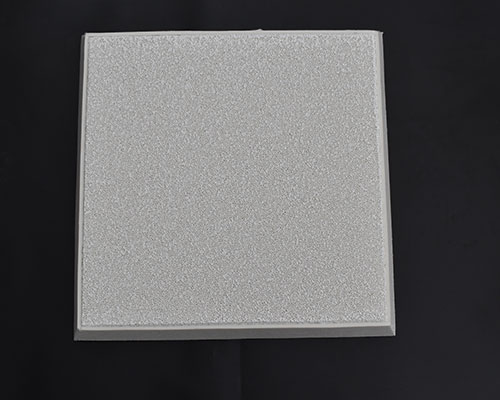The ceramic foam filtering method is used to filter and remove entrained solids from molten aluminum alloys. The ceramic form filter has an open-cell structure, which is characterized in that a plurality of interconnected voids are surrounded by a ceramic mesh. The use of ceramic foam filters greatly improves the filtration efficiency in molten aluminum.
Molten aluminum in practice generally contains entrained solids that are deleterious to the final cast metal product. These entrained solids usually derive from three sources.
Some are particles of aluminum oxide which are drawn into the liquid stream from the floating oxide layer on its surface, and some entrained particles are fragments of furnace lining, transfer trough, and other portions of the molten aluminum handling equipment which are eroded and entrained in the flowing aluminum stream, and some particles are precipitates of insoluble impurities such as intermetallics, borides, carbides or precipitates of other aluminum compounds, such as chlorides. When these inclusions appear in the final cast product after the molten aluminum is solidified, they cause such final product to be less ductile or to have poor finishing characteristics. Accordingly, it is desirable to remove entrained solids from the molten aluminum stream before it is cast into a solid body which may be used as such or subjected to forming operations such as rolling, forging, extrusion, etc.

Filtering processes to remove entrained solids from liquids is accomplished by passing the solid-laden liquid through a porous filter medium that will not pass the solids. Filtering molten metal in general, and molten aluminum in particular, creates special problems because the liquid is so aggressive that it is difficult to find a filter medium capable of withstanding it.
In general, two methods of filtering are used for removing entrained solids from molten aluminum alloys before casting. The most common filter medium is an open weave glass cloth screen placed in the metal transfer trough, around the spout, or even in the molten metal pool in the top of the solidifying ingot. These cloth screens are able to remove only the larger sizes of inclusions from the metal and are easily ruptured during use because the glass fibers become very weak at the temperature of molten aluminum.
In another prior art procedure, molten aluminum is filtered through a bed of loose alumina particles, for example, of tabular alumina, but it often suffers from the drawbacks normally associated with bed filters in that it passes too many solids, there is a strong tendency to channeling which prevents efficient use, and pore size of the filter is not easily controlled but rather readily changes under conditions of use so that, even when originally of proper dimension, it cannot be efficiently maintained. In addition, the metal must be kept constantly molten when the filter is not in use.
Experiments have proved that the ceramic foam filter is particularly useful in filtering molten metal, especially molten aluminum. The high-temperature resistance of the filter is particularly useful under the strict conditions of use encountered in molten metal filtration. In addition, the composition of the ceramic filter does not contaminate metals.

